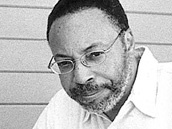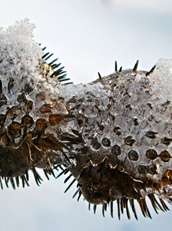Writings / Reviews
Frankenstein: A Cultural History
by Susan Tyler Hitchcock
W.W.Norton, 392pp
Susan Tyler Hitchcock’s Frankenstein: A Cultural History (W.W. Norton, $31) traces the history of the (in)famous monster myth from its development as a ghost story invented by a pregnant, unmarried teen, Mary Godwin, in Italy in 1816, to its debut in her 1818 novel – published as Mary Shelley, on to its arrival in movies, comic books, and TV shows – and even breakfast cereals.
Interested in how an 1816 story has become a global phenomenon, Hitchcock (her surname suits her subject) discusses the quandaries of the novel and their popularization in innumerable forms, from newspaper discussions of genetically modified “Frankenfoods” to the campy spoofs such as The Rocky Horror Picture Show. Central to Mary Godwin Shelley’s novel, titled Frankenstein; or, the Modern Prometheus, are two proverbial warnings against 1) the hellish consequences of good intentions and 2) the freakish outcomes of blind ambition.
Scientist Victor Frankenstein succeeds in playing God, in creating life. But his monster or—as Shelley preferred to describe him, “creature,” rejected by the scientist, becomes a murderer, even killing his creator’s bride. Hitchcock celebrates Shelley’s immortal story, observing “She dared to approach the forbidden, ignoring conventional laws of good and evil…. She wrote the story humankind had been waiting to hear and, having written it, sent it out into the world—her ‘hideous progeny,’ as she called it—to be heard, read, enacted, viewed, analyzed, interpreted, remembered, rebuffed, and, yet again, retold.” One could add “parodied” to that catalogue of verbs.
But what makes the story of Dr. Frankenstein and his creature so compelling is that it is itself a parody of Genesis, as Hitchcock divines: Aren’t Adam and Eve desired beings who, due to rebellion, become ‘monstrous’ to a God who thus drives them from the Garden of Eden (to be redeemed later by a Messiah, according to Christian thought)?
Hitchcock finds one source for Shelley’s novel in John Milton’s epic poem, Paradise Lost (1674), which yielded the epigraph for the work. And the novel’s subtitle refers to the myth of Prometheus, punished by the gods for stealing the miracle of fire and bringing it to mankind. But Shakespeare’s monstrous character, Caliban, from The Tempest (1611), is likely another antecedent for Shelley’s fiction. Though Caliban is not the whelp of his master, Prospero, he is his slave and pupil and wishes to rebel: “You taught me language, and my profit on’t / Is, I know how to curse.”
Then again, it is one of the sorrows of humanity that we are all capable of raising or nurturing human beings who commit monstrous acts or crimes. The real newness of Shelley’s story is her use of science as amoral midwife to moral disaster and mass destruction. Later on, this midwife is personified in plays and films as the hunchbacked Igor, assistant to the mad scientist Dr. Frankenstein. Throughout her history, Hitchcock dovetails social and scientific ‘progress’ with changes in how the Frankenstein story is refreshed and received. Thus, she demonstrates how this modern myth speaks to anxieties about how scientific research and discovery may redefine the meanings of human, inhuman, and subhuman.
As fundamental as Shelley’s original work is to the promulgation of the Frankenstein ‘moral’ (or ‘morals’), it gained new popularity due to Boris Karloff’s depiction of the creature in the 1931 film classic. Most subsequent dramatizations owe something to Karloff’s acting, which means that they are also slightly ‘Canadian,’ for Karloff emigrated here from England in 1909. Intriguingly, the Frankenstein story has inspired Canadian writers, and Hitchcock notes Margaret Atwood’s poetry collection, Speeches for Dr. Frankenstein (1966), as well as her novel, Oryx and Crake (2003).
Missing from her account, however, is the late Nova Scotian-New Brunswick writer Alden Nowlan’s 1976 stage play, Frankenstein: The Man Who Became God (co-authored with Walter Learning), which even toured to Los Angeles, home of fabulous monsters of all sorts. Hitchcock’s history is well-researched, but it’s too bad she also misses the films Frankenhooker (1990) and The Phantom of the Paradise (1974).
For the Children
by Rita Joe
Breton Books, 2008.
A First Nations native of Cape Breton, Nova Scotia, Rita Joe died in March 2007, at age 75. Awarded the Order of Canada and presented with several honorary doctorates, she was a poet who placed a Mi’kmaq sensibility at the core of what was once purely Eurocentric, Atlantic Canadian poetry and literature. Joe published four books of poetry in her lifetime: Poems of Rita Joe, Song of Eskasoni, Lnu and Indians We’re Called, and We Are the Dreamers. In each, she offers plain-spoken lyrics that name things for what they are, whether it is anti-Native prejudice or the feel of bark from a tree at her birthplace, Eskasoni.
Her first posthumous book is For the Children (Breton Books), which arrives with a generous assortment of black-ink, natural history woodcut illustrations by Cape Breton artist Burland Murphy. While Joe’s lyrics are accessible to children, adults will also find much here that educates, entertains, and disturbs. “Old Stories” begins simply, even romantically: “There are stories told by the elderly / Of bannock baked in a bed of stone / Of birch bark fashioned into a pot / To boil meat and bone.” Joe’s persona also recalls, “Prayers and song / Memories told to the young / When all life was Inua’kis (Indians).” The last stanza is devastating: “It will never be the same again / Only in our minds and elderly tales.”
In just a few lines, Joe renders redundant the contents of entire libraries on Aboriginal dispossession and cultural destruction. In “Prejudice Is Something We Can Do Without,” an unabashedly didactic poem, Joe is again direct and clear about her concern, never allowing imagery to clutter or distract: “I walk into a store in town / My pockets bursting with money…. / The clerk … sees my face, the rugged clothes / My feet in mukluks…. // She has immediate ideas of the poor Indian, / The stereotype in progress….” Angered by the clerk’s “ill will,” Joe’s persona shops at a different store, “where the clerk is all smiles, even if it hurts….”
Some lyrics re-tell Mi’kmaq spiritual tales (I won’t call them ‘myths’): see “The Legend of the Sky Bear”: she appears each spring and is pursued by hunters, who “finally in mid-autumn / … overtake their prey and kill her.” Now, “The robin becomes covered with her blood” and “tries to shake it off,” but some sticks to its “breast.” The rest of “The gore he trembles / Spattering to the earth below / And there we see autumn / The red tint on leaves / The reddest on maple.”
Joe writes sharply, if subtly, of the disjuncture between capitalist development and commercial products – and the once-Nature-based world of indigenous Nova Scotians: “There was sandwiches and ice cream / Water and pop and bathrooms, sometimes woods.” Her speaker tries “to visualize what we saw / The majestic beauty still there (in Cape Breton), but now it is “seen on television.”
The book’s first poem, “Keskmsi’,” a memory of when Joe began to write as a child, reveals her sensible poetics: “I print small words / The ones I know, / I try to put them in order.” For her, poetry is craft, a kind of carpentry: “Poetry is my tool, / I create as I go….” Joe is gone; her art goes on.
The Red Element
by Catherine Graham
London, ON: Insomniac, 2008.
Catherine Graham teaches creative writing at the University of Toronto, and is the author of two previous books of poetry, The Watch (1998) and Pupa (2003). This new collection, The Red Element (Insomniac, $11.95), recalls the similarly brief, imagistic, and whimsical lyrics of the U.S. poet Richard Brautigan.
But Graham’s opening epigraph is from the U.S. poet Wallace Stevens, and there is a lick of his playful abstraction in her lyrics, as in “Window Washer Sings at the Terminal”: “His song makes me think / of green hills with little green stalks / upright, wind leaning. Look…. / His song has edged us / to the clarity of sweet loss and the window / is ready now for wings to fly through it.” “His Birthday Falls on Halloween” allows truly haunting imagery: “When (“An airy hand”) lands on light’s marrow, the lost bones of your brother, / all hell flickers through a crowd of orange mouths.”
These poems are fine works. Choose any set of lines: “By the end of mid-October…. / Off come the leaves. / They whip through the world as birds.”



